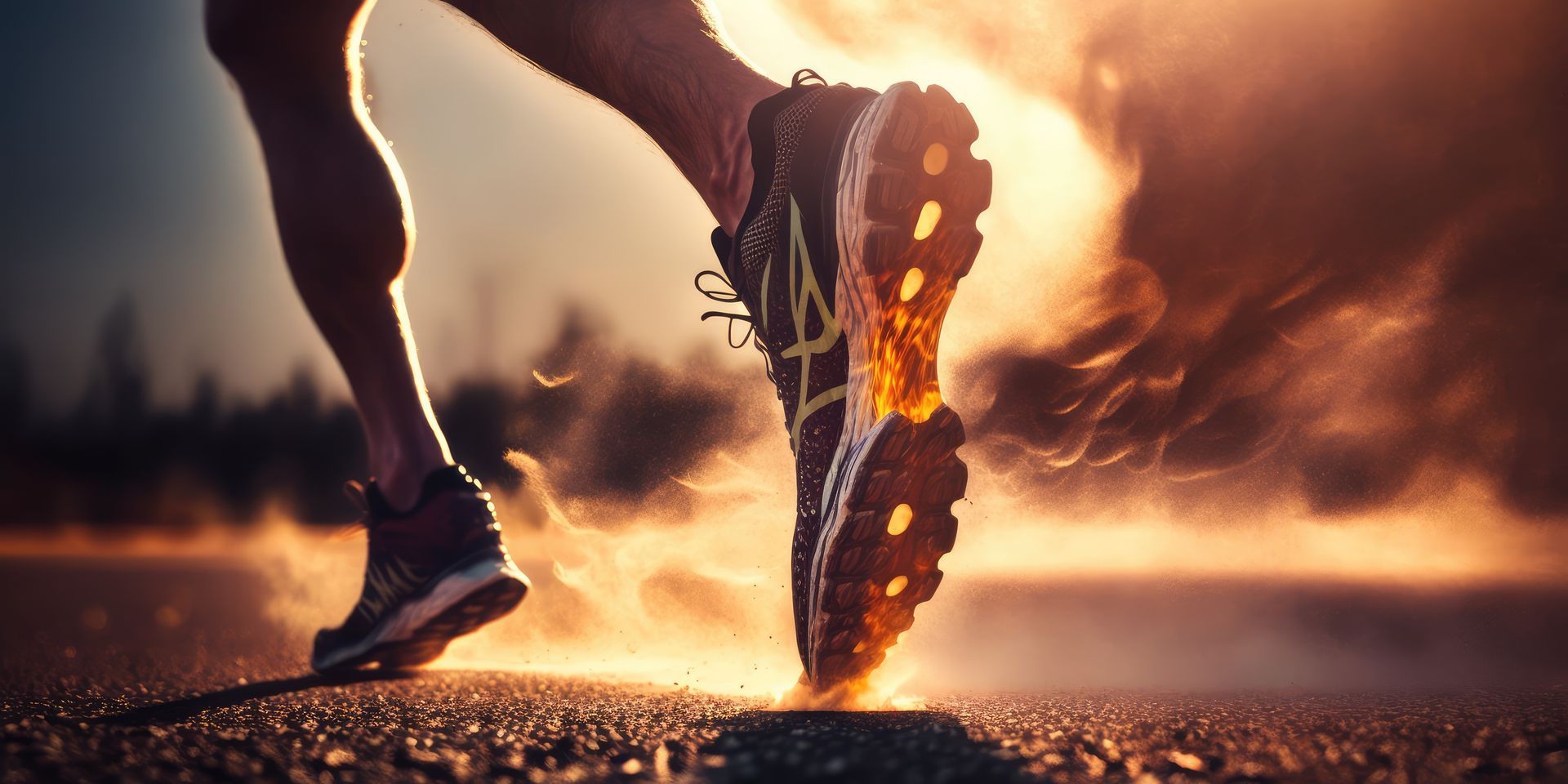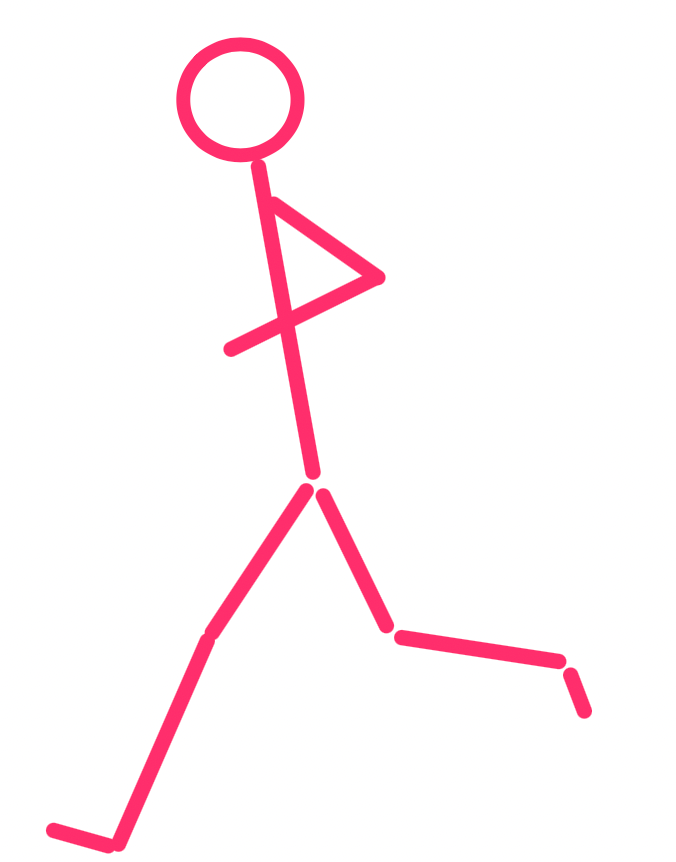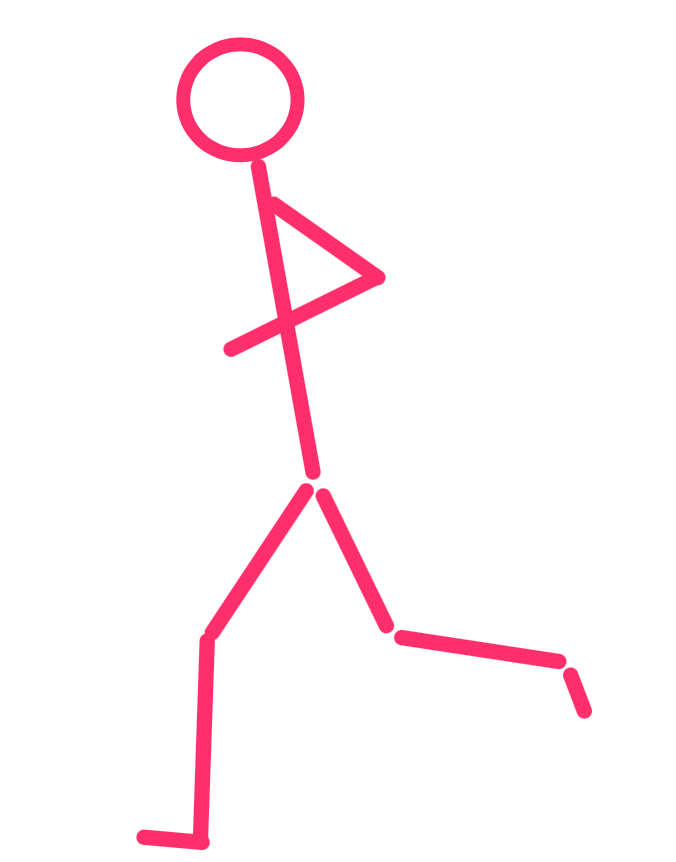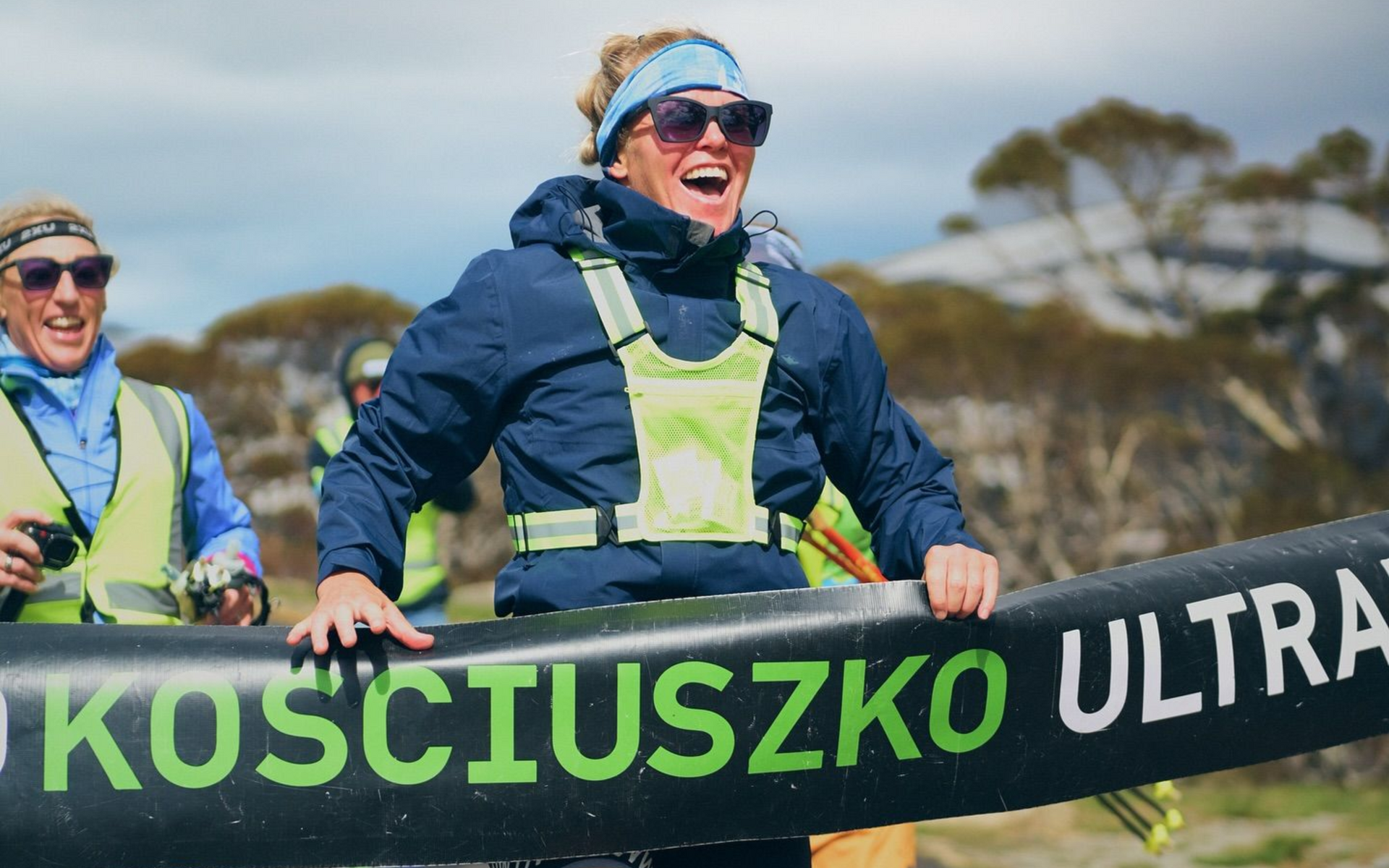
COACH’S CORNER - Should You Change Your Running Form? by Andy DuBois
Should you change your running form, and if so - how?
If you watch enough social media you are likely seeing a ton of posts by run-fluencers spouting all kinds of advice on how to change your running form. Unfortunately, much of this advice is either completely wrong or only telling part of the story.
Let’s go through the most common recommendations and see how much truth there is and then make some recommendations on if you should work on changing your form and how you would go about doing that.
You should strike the ground with mid-foot
Apparently heel striking is a cause of injuries and is an inefficient way to run. Mid-foot strike leads to less injuries and faster running.
This is probably the most commonly held belief on running form but there is no evidence to support it. We know that even elite marathons heel strike (40-70% depending on which study you read). We also know that whilst heel strikers may be more likely to have knee injuries, mid foot and forefoot strikers have more calf and foot injuries so changing foot strike just changes the where the load is felt, it doesn’t take it away.
Foot strike changes with speed and the faster you run the more you move to a mid-foot then forefoot strike. Sprinters will land forefoot, ultra runners are mostly heel strikers.
Some argue that one can’t load the Achilles tendon effectively if you heel strike yet effective loading of the Achilles occurs with rapid dorsiflexion. This can happen if forefoot hits the ground first and the heel drops down or if the heel strikes first and the lower leg tilts forward over the foot rapidly. Think back to the stretch most of us have done when you try and push your knee into tawall with a bent leg stretching out your calf - that’s dorsiflexion. If you rapidly dorsiflex and your calf contracts isometrically (i.e. doesn’t lengthen) then the load is transferred into the Achilles which can then act as a spring to drive you forward. This happens in heel strikers just in a slightly different way to mid foot strikers.
This study (1) found heel striking is actually more economical at speeds 15kph and slower “The present study showed that habitually rearfoot striking runners are more economical than midfoot strikers.” That’s not to say we should switch to a heel strike but it adds to the weight of evidence that show there is nothing wrong with a heel strike.
To summarise foot strike take this recommendation from the authors of this study (2).
“Coaches should thus note that encouraging marathon runners to convert from rearfoot to non-rearfoot striking is unlikely to provide any performance benefits, and that training the fatigue resistance of key lower limb muscle-tendon units to avoid decreases in step length and cadence are more useful in preventing reductions in speed during the later stages of the race.”
A cadence of 180 or over is optimal and if its slower you should increase it
A while ago Jack Daniels (the coach not the whisky maker) counted the cadence of some elites at the Olympics and found all but one was over 180. Some took this to mean 180 was the perfect cadence or that cadence should be at least 180. Many have argued that regardless if you are running over 6min k’s or sub 3min k’s your cadence should be at least 180.
Do we really think that someone running 6min k’s should have the same cadence as someone running twice as fast?
There is no best cadence. Cadence is dependent on the speed one is running, one’s running form and leg length. There is no one number we can apply to all. Jim Walmsley for example set the 50 mile world record with a cadence in the low 160s but when doing track sessions is high 170s. Just because your cadence is less than 180 does NOT mean you need to increase it. Having said that there are some guidelines we can use as to if or when it may be beneficial to increase it.
A cadence of under 160 suggests an overstride and the runner would likely benefit from increasing it unless they are very tall with long legs. Injured runners may benefit from increasing cadence as a means of reducing the load on the legs.
For most of us with a cadence above 170 there is no real evidence to suggest you would benefit from increasing it.
One should strike under your hips/centre of mass
This is a popular belief that is actually physically impossible. No-one strikes underneath unless you are running on the spot or accelerating out of the blocks (not a common occurrence in an ultra). What we actually see is the faster you run the further ahead you strike the ground. Watch the elites running sub 60min half marathons and they strike further ahead that someone running 6min k pace. Striking ahead of your body is NOT overstriding - if it was then every single runner in the world overstrides.
You can use gravity to fall forward when you run
There are a few running methods that claim you can use the free energy of gravity to drive you forward. Running is a series of falls they say. Typically you are told to stand up, lift a leg up, lean forward and voila your leg goes forward and you start running - free energy from gravity - happy days. Well, unfortunately there is no such thing as free energy and this whole scenario violates the laws of physics and running biomechanics. Let’s unpack it and explain what’s going on.
First of all when your hips move forward past your centre of gravity your stumble reflex kicks in and drives your leg forward to prevent you from falling on your face. That all sounds good you say - well the problem is for that to continue to work we would need to continue to fall forward - so with every stride we would need to fall forward a little more. To make that happen you would need to straighten up again so you could fall forward again or lean forward a little more. Neither of which happen when we run - have you ever seen someone lean forward and hen straighten up with every stride as they run?
The next issue is this whole concept of using gravity. The theory is you find your runner’s mid-stance position (they refer to it as something that rhymes with runners hose position), and from that position, you fall forward, let gravity do its thing and push you along, find your runner’s midstance on the other leg and do it all again. They will even demonstrate this and make it look convincing, but you can only do it once. After that, it’s not possible, here is why.
The problem is your mid-stance is the lowest position in the running gait. Your foot is planted on the ground under your body, and the knee is bent so your centre of gravity is at the lowest position. From that position, the only direction you can go is up. You can’t fall forward from the lowest position. What happens is your hip and knee extend as your pelvis moves forward over your foot and then you drive up off the ground into the flight phase. Gravity can’t pull you up. The whole premise of using gravity to push you horizontally forward from the lowest position in running gait is fundamentally flawed. The only good take home from this advice is a slight lean forward from the ankles can help some runners but that’s it.
Engage your core to stabilise your pelvis
Please don’t do this! What many don’t realise is that for efficient running your pelvis has to move in 3 different directions, it tilts forward and back, tilts side to side and rotates left and right. Without those movements you can’t run. Training your body to engage the core and stabilise the pelvis is not going to improve those movements. Engaging the core when you run just limits diaphragmatic breathing and is of no benefit to running economy.
Watch the late great Kelvin Kiptum from a front on view and see how much movement is going on with his upper body, if only he engaged his core he would have run sub 2.
Arm swing should be forward and back and elbows at 90 degrees
Watch any elite runner, watch Kipchoge or Kilian or Walsmley or Dauwalter or Schide, all of them have arms that come slightly across their body and their elbow bend will differ. For sure too far across the body is a problem but the upper body has to rotate so some movement across the body is normal and not to be avoided.
Elbow bend should not be exactly 90 degrees - we aren’t robots! It can range from 70-110 degrees or more.
Lift your foot up behind you
The idea here is that lifting your foot up behind you it reduces ground contact time, which leads to faster running. However the height your foot lifts of the ground behind you is directly related to the speed you are running at.
As our hip extends behind us it stretches the muscles of the hip like stretching a rubber band. Once the foot comes off the ground that rubber band is released and flings the thigh forward, bringing the lower leg with it. The foot then follows, swinging up behind the thigh.
The faster you go the more stretch there is and the more the foot lift there is. It happens at a subconscious level. Actively lifting the foot with the hamstrings is less efficient not more.


What to focus on instead
As you can see most of what you read and see on social media is pretty much wrong. So how do you determine if your running form needs changing and what can you do to change if it does?
For the majority of people running form will self optimise through more and more running. To quicken that process perform strides, short hill reps, strength training and plyometrics as well as just run a lot.
There are some people however that would benefit from a few technique changes. The three most common flaws I see in runners are:
- Overstriding
- Sitting back too far in their stance
- Low Cadence
Overstriding - what is it?
We know that striking ahead of our body is not overstriding as it's impossible to run any other way. There is another belief that whilst we can’t land under our body the closer to it we strike the ground the better. This ignores the fact that the distance we strike the ground in front of our body is relative to the speed we are running at.
A better definition of overstriding is striking the ground with a forwards travelling leg, with an almost straight leg or with a lower leg that is angled forward. In all these cases it will increase breaking forces, place more stress on the legs and will negatively impact running economy.
A good foot strike is one that strikes on a backwards travelling leg, under the knee with an almost vertical shin. The only way to tell if you are over striding is via slow motion video analysis by someone who understands biomechanics.
There are a few running technique cues one can use to correct an overstride including:
- Try to pull back the front leg before striking the ground
- Try to land softly
- Increase cadence
- Minimise ground contact time
- Slightly leaning forward
Strides either on the flat or uphill can help reduce an overstride and are worth putting into your weekly routine.
Sitting back in your stride
Sitting back is when the pelvis sits behind the knee at mid stance causing the knee to become overloaded due to the lack of contribution from the glutes. This is often accompanied by an over stride.
To correct this a focus on running tall and leaning forward. Imagine there is a string tied to the top of your head and you are being pulled up and slightly forward as you run.
Low Cadence
If you cadence is less than around 170 (and you don’t’ have very long legs) increasing your cadence would likely help. Don’t aim for a specific number just aim to increase it by 5rpm or so. Listening to music at the same beat as your desired cadence can help the transition.
If you are injury free and running is progressing well then it’s likely you do not need to focus on changing your form. Keep doing what you are doing and think about adding in some strides one or twice a week to further improve.
If you have been battling injuries of feel like you just can’t go any faster despite training hard then changing your form might be beneficial.










